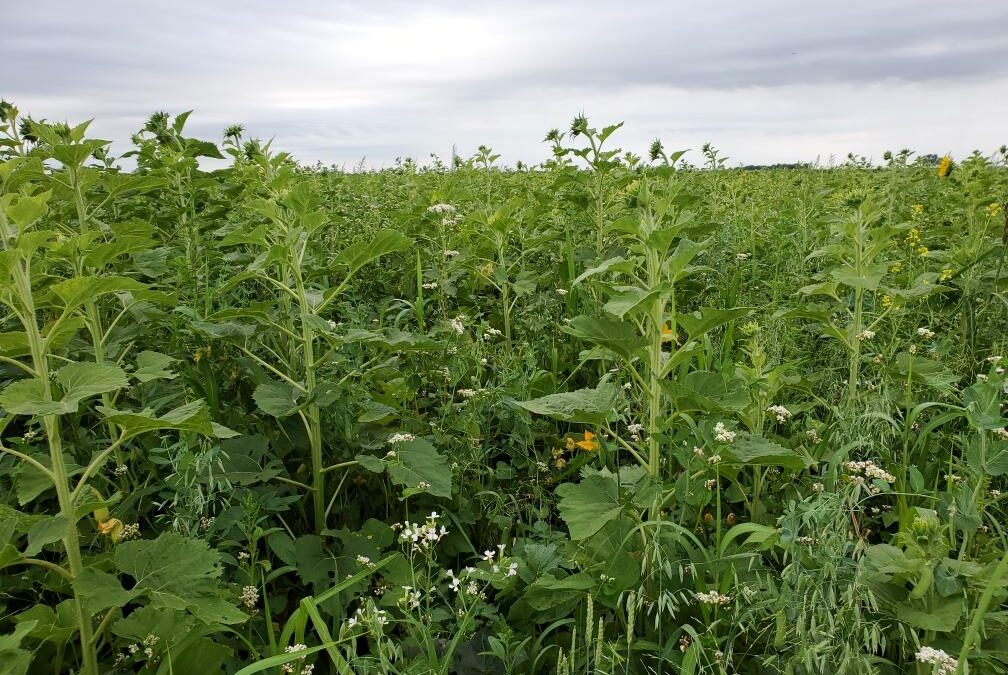Thank you to all the participants in the 2021 Soil Health Conference Student Essay and Photo Contests, and congratulations to the winners!
The first place winner in each category won a $400 cash scholarship, and the second place winner in each category won a $200 cash scholarship.
See the winning entries below.
First Place Student Essay
Lorie Steiner, Lake Area Technical College
Soil is like an artist painting a picture. The artist takes a blank canvas, studies it because the picture needs to be just right. The artist then plans to execute the colors-blending them to create a masterpiece that will last. Once completed, the artist stands back, admires the passion and hard work that went into the creation. A producer is like an artist, but the soil is the canvas that the producer will use to create that perfect scene and the end result can be just as spectacular as the artist’s canvas.
How can soil be like a painting when you are dealing with brown dirt? This may be the consensus amongst skeptics, but what you put into that soil can make or break that canvas. So, what can help create that perfect picture? Diversity. Increasing plant diversity can help minimize some of the negative factors that comes with environmental changes, insects and diseases. This can be done by having a variety of dominant, forage species in your grasslands. Mixing cool season with warm season plants helps the soil to keep cover at different temperatures while capturing sunlight needed for photosynthesis. Utilizing cover crops in your rotation will also keep the soil covered plus it can be nutrient saving by picking up residual nitrogen from the growing season which may reduce leaching and have nutrients ready for the next crop.
South Dakota is an agriculturally diverse state. Diversity is what helps South Dakota act as a major contender in producing quality products for consumers locally and nationally. This is partially because producers in South Dakota understand that investing in your soils, your soils will give back to you.
Long after we are gone, that same soil will still be sustaining life. The artists may change, but the canvas will remain if well-preserved. What a legacy to leave for future generations. Now, that is a beautiful picture.
Second Place Student Essay
Lynn Foster, Brookings High School
Growing up on a farm you learn that soil health is hugely important when it comes to the growing crops. Most farmers use different methods of soil health to keep their soil healthy: soil cover, limited disturbance, living roots, diversity, and integrating livestock, which are the 5 principles of soil health. My family and I live on a small farm just outside of Brookings, my dad and I are both passionate about keeping our soil healthy now and for future use. We use multiple methods of soil conservation types, the main one being limited disturbance.
Tillage fractures the soil by disrupting the soil structure, accelerating the surface runoff, and promoting soil erosion. A common effect with tilling is decreased water storage and infiltration. When uprooting the soil the water pathways become broken which results in water slowly seeping into the soil at a much slower rate. Those pathways also lead to a space for water to be held, once those pathways are destroyed the aggregates and organic matter are reduced.
Tillage also reduces crop residue, which is part of the top soil structure, it helps to cushion the force of pounding raindrops. Crop residue helps to keep your organic matter and those pathways safe.
Reduced organic matter becomes an issue when it comes to tillage, when the organic matter is exposed to air it becomes consumed by bacteria and gets lost through erosion. When crop residue becomes reduced due to tillage, it takes away a barrier from the outside elements and allows for an overflow of water and wind erosion to carry away the top soil.
By reducing tillage the producer recognizes that no-till farming minimizes soil disturbance, which helps keep carbon in the soil. It also enriches soil biodiversity, reducing the need for chemical fertilizers that emit greenhouse gases. As well as reduced fuel and equipment costs.
If we don’t take care of the soil that helps to produce the food we eat then where will we be? Healthy soil produces healthy crops that help to nourish people and animals. Soils supply the essential nutrients, water, oxygen and root support that our food-producing plants need to grow and flourish. They also serve as a buffer to protect delicate plant roots from drastic fluctuations in temperature. Soil is to root of our life system, it is essential to ensure a steady supply of food and biodiversity in our lives. We need it.
First Place Student Photo
Megan Stiefvater, McCook Central High School
Milpa Garden – “Season long plant diversity increases soil health.”

Second Place Student Photo
Ella Stiefvater, Homeschooled, Salem, S.D.
The Prairie Tide – A rotational field currently in a grassland state allowing various vegetation to grow which will allow livestock to graze the land in the near future.


0 Comments